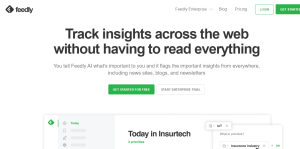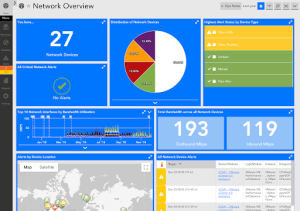An Android mobile application is a way to access data from other systems. It should be easy to use. The Android system gives certain permissions to an application without the user’s knowledge. You can customize an Android application for user ease. But you should make sure that the app is safe and secure. You can use Open-source software.
Content Providers are a bridge between data and an android mobile application
In Android, Content Providers are the bridge between an application and the data it requires. These services act as relational databases that allow other applications to access and modify data. These services can be implemented in different ways. To use them, an application needs to be registered with a provider tag in its activity file.
Content Providers are an essential component of an Android mobile application. They manage the access to a central repository of data and act as a connection between applications. For example, a media player application can access music from the phone’s storage through a content provider. Content Providers and their client objects provide an a standard interface to data and enable other applications to access data in a secure and consistent manner.
The URI of the content provider will be a string. This string will be used as the query string. The first part of the URI is called the Content URI. The second part of the URI is called the authority part, which is the name of the content provider. The authority part should be unique for every content provider. The third part of the URI is the optionalPath or ID, which specifies how to access data from the content provider.
Content Providers are used in android mobile applications to make sure that information is accurate. For example, a content provider can be a database or Xml file. It must be registered with the package manager, and its authority must match that in the contract. It should also be named the MainActivity.
Google Play
Google Play is a great place to find free apps and games for your Android device. You can browse and download apps and games and view the reviews and ratings of other users. It also has a digital media store where you can purchase games, movies, television shows, and e-books. However, it can be overwhelming at times with so many choices and commands.
Before you download and install an app from Google Play, be sure to check the permissions that the application requires. Some apps may require permissions to access your address book or contacts. This may not be a big deal, but it is a good idea to know what you’re agreeing to before downloading an app.
The Google Play store also includes a recommendation engine for free and paid apps. Paid apps and games may have a small fee, which is why it is essential to have a Google account in order to download and install apps and games. But if you’re an independent developer, don’t worry – it’s still possible to distribute your apps without using a Google account.
There are a number of different versions of the Google Play store. Some are designed for specific devices, including Android TV and Wear OS. These new versions are generally compatible with the current version of Android. You can update the version on your Android device through the Play Store. You can find instructions on updating the Play Store on Google’s official website.
The Google Play Store has a variety of settings for installing and uninstalling apps. First, make sure to choose a category for your app and tags. Next, you should include your contact information, including an email address that is separate from your Google account. Finally, you can select whether you want to automatically update the app or not. You may also want to set a time frame that allows you to download your app.
Open-source software Its developers have created an open-source project, the Android Open Source Project, to help developers create custom variations of Android. This project also helps developers port their devices to the Android platform, making sure they meet certain compatibility requirements. These efforts are helping to foster a healthy Android ecosystem that serves millions of users.
Open-source software for android mobile application development is free, and it makes it easy for developers to develop native mobile applications for iOS and Android platforms. With an open-source approach, it offers free, high-performance tools that are backed by a community of developers. The software also allows for integration with different libraries.
Android is based on the Linux kernel. It’s open-source and free, and many manufacturers are using it to create their devices. For example, Amazon has made its Kindle tablet based on the Android platform. LG has released smartwatches using Android, and NVIDIA has put Android on game consoles. Other companies are shipping Android-based smart TVs. Interestingly, Android has even been installed on refrigerators and point-and-shoot cameras.
Because Android is open-source software, it can be freely modified and adapted for your needs. You can customize the layout and add features that are appropriate to the user base. Open-source software for android mobile application continues to grow and change over time. While there are many advantages to open-source software, there are also several disadvantages.
Permissions granted by the Android system without the user’s knowledge
The Android system allows for some permissions to be granted to an app without the user’s knowledge. These permissions may include reading data from the device’s storage and connecting to the internet. These permissions can sometimes be dangerous if an app doesn’t ask for the user’s permission before it begins using the device.
The Android system also includes dangerous permissions that allow applications to access data that is outside the application sandbox. This can have negative consequences on the system, user data, and other applications. For this reason, you should only allow permissions that you explicitly grant to an application. Starting from an app should ask the user’s permission at runtime. The user can then revoke the permissions later if necessary.
There are three different types of permissions available for Android applications. Some of them are obvious, while others are not. The first kind, called limited access, requires the application to request access to resources. It allows an application to access your contacts and GPS location. The second type, called sensitive access, requires explicit user permission.
Some of the most dangerous permissions are those granted to an application without the user’s permission. Trojans are able to exploit these vulnerabilities and grant applications root permissions. Once you’ve granted root permissions to a malicious application, you’re left with a vulnerable phone. Fortunately, Google is taking action to protect users against malicious apps.
In order to prevent the Android system from granting permissions without the user’s knowledge, Android applications should provide a method to trigger a permission request manually. In order to trigger a permission request manually, an application must call Permission.HasUserAuthorizedPermission() or Permission.RequestUserPermission(). Android users can grant or deny permissions manually through the permission dialog.
Cost of developing an android mobile application
The cost of developing an Android mobile application is dependent on several factors. For example, the complexity of the app, its features, and the tech stack will all contribute to the overall cost. The more complicated and sophisticated the application is, the more expensive it will be to develop. Consequently, it is best to start with a minimum viable product (MVP) instead of a fully-fledged project.
In addition to these, the type of Android mobile application that you want to develop will impact the cost. For instance, if you want to build a social networking application, you will need to provide support for millions of users. This means that the cost of an Android app will be higher than a less complicated one. The same goes for IoT-based applications, which rely on special ROMs and hardware devices. A popular example of this type of application is Moo, which manages transportation at the micro level.
App testing is another key part of the Android application development process. This involves ensuring that the app is functional across a variety of screen resolutions and displays. Developers also need to consider the fact that Apple’s strict guidelines for app selection may lead to a more stringent review process than those for Android applications. This will add to the overall cost of the project.
Once your app is developed, you will need to submit it to the app stores. Apple’s Developer Programme costs $99 per year and allows developers to submit unlimited apps. On the other hand, Google’s Android Developer Programme requires a one-time fee of $25.






